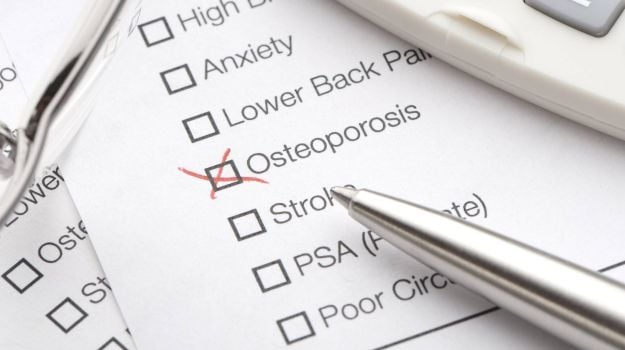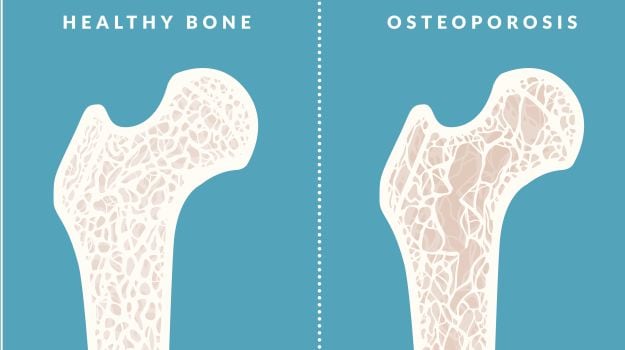
Osteoporosis is extremely widespread with an estimated one in every three women and one in every five men facing the risk of suffering from the condition. Some of the most fracture prone and highly vulnerable areas in the human body include hip, wrist and spine. Vertebral and hip fractures often turn severe leading to long term dependence on medication. In most cases (vertebral), the consequences may translate to structural deformities, loss of height and an inability to function independently. In such and most circumstances, surgery is the only option.
(Fluoride May Increase Risk of Fractures)
Key facts
As stated on the International Osteoporosis Foundation's official website:- Worldwide, osteoporosis causes more than 8.9 million fractures annually, resulting in an osteoporotic fracture every 3 seconds- Nearly 75% of hip, spine and distal forearm fractures occur among patients 65 years old or over- By 2050, the worldwide incidence of hip fracture in men is projected to increase by 310% and 240% in women
- In India, experts estimate osteoporosis to be close to 36 million (2013)
- In a study among Indian women aged 30-60 years from low income groups, bone mineral density at all the skeletal sites were much lower than values reported from women in developed countries, with a high prevalence of osteopenia (52%) and osteoporosis (29%) thought to be due to inadequate nutrition.
- Nearly 75% of all hip fractures occur in women, whereas men account for 25% of hip fractures occurring in the over 50 population(Does Your Daily Diet Include Calcium Rich Food?)
Prevention
Loss of bone mass or density is a gradual process that gets activated post twenties. The only way to ward off the condition is to ensure optimum bone health. Proper diet, right from one's childhood, would be the first, basic step towards ensuring strong bones. One's diet should comprise adequate amount of calcium and Vitamin as well as iron, protein and other essential nutrients. Maintaining a healthy weight and avoiding frequent weight fluctuation, sudden weight loss, unhealthy BMI or under/malnutrition are extremely imperative to keep the bones healthy and prevent them from getting weaker.Load up on Calcium and Vitamin DDepending on our age, the rate of losing and growing bone differs. Children make more bone tissue than they lose but as they become an adult, gradual bone tissue loss begins. In women, after the age of 50, the situation becomes more severe due to other related factors such as hormonal changes of menopause. In case you are allergic to milk or dairy products, get in touch with your doctor to prescribe you calcium supplements. There are also other non-dairy sources which can make for your daily dose of calcium, these may include fruits like oranges and figs; almonds, white beans, broccoli, soya and oatmeal.Vitamin D is also of the utmost importance, it is responsible for the optimum and effective calcium absorption by the body. Regular consumption of mushrooms, cheese, fish, eggs and soy should supply you with your daily need of the vitamin.(This Compound in Wine May Help Treat Osteoporosis)
According to a Delhi-based radiologist, Dr. Manoj K. Ahuja, "Osteoporosis can be prevented by exercising regularly and maintaining a balanced diet. Walking daily for at least half an hour is essential. If you feel weak at the joints, please get a bone density test done."(A Calcium-Rich Diet Can Protect You Against Exercise Related Bone Injuries: Study)
Role of Regular Exercise
Daily exercising keeps one fit, agile, flexible and helps in strengthening the bones and the muscles. Those who exercise regularly are less likely to suffer severe injuries after a fall. Physical fitness should be encouraged right from childhood and strictly followed through adulthood. One of the most recent studies published in the journal Bone reveals that "certain types of weight-lifting and jumping exercises, when carried out for at least six months, may improve bone density in active, healthy, middle-aged men with low bone mass. These exercises may help prevent osteoporosis by facilitating bone growth."
The International Osteoporosis Foundation also recommends 30 to 40 minutes of physical activity at least thrice a week, which should include some sort of weight training or resistance exercises.
(How to Get Calcium in Your Diet: 7 Dairy Free & Vegetarian Sources)Yoga for Bone Strength
According to a well renowned yoga practitioner as well as fitness expert, Seema Sondhi, certain weight-bearing asanas not only help in strengthening bones and muscles, but can also prevent osteoporosis. Some of the asanas that one can practice include trikonasana, bridge pose, and warrior pose that help in exercising the spinal area as well. Those who already suffer from the condition should get in touch with a certified yoga trainer for specialised postures.(Different Types of Yoga and Their Many Health Benefits)





